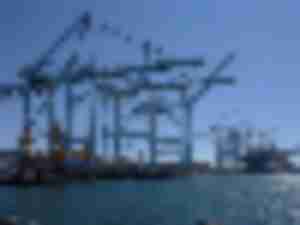LA’s Seroka expresses support for Ag exporters but cites challenges
Port of Los Angeles executive director, Gene Seroka, supports U.S. agricultural exporter efforts to increase export bookings on global ocean carriers, but cites challenges related to the recent import volume surge.
2021 has felt like one big peak season: a global shipping market update
Mike Short, president of Global Forwarding at C.H. Robinson, shares an update on the current global shipping market and insights into how shippers can prepare for this historical peak season.
Shipping delays agitate medical supply chain woes
Michael Einhorn, President and CEO of Dealmed disscusses how critical commercial trucking is to keeping supply chains open for medical supplies while COVID continues to surge, and offers insight on how to remedy the issue and prevent the medical supply chain crisis from growing.
Ag Associations send another urgent plea to President Biden
This morning, over 70 agriculture associations delivered another urgent plea for intervention to President Biden, USDA Secretary Vilsack, Secretary of Transportation Buttigieg, FMC Chair Maffei, the Chair of White House Council of Economic Advisors, and the US Attorney General.
Long Beach Port Executive Director hails President Biden’s Infrastructure Bill as “breath of fresh air”, cargo volume to surge in 2021
Mario Cordero, the executive director of Port of Long Beach, welcomed President Joe Biden’s $1.2 trillion infrastructure bill, adding that “we have an administration who talks about ports”. While presenting the infrastructure plan, President Biden had announced that the plan would also include ports besides building highways and bridges.
STB’S Oberman says US railroads reduced service, raised rates and derived $191 billion in dividends and buybacks since 2010
Martin Oberman, chair of the Surface Transportation Board (STB), charged U.S. railroads with reducing service, raising freight rates, shifting more truckloads onto highways, contributing to global warming while deriving $191 billion in dividends and stock buybacks since 2010.
Port of Los Angeles reports 36.8% volume jump in July
The Port of Los Angeles reported year-to-date container volumes were up in July by 36.8% over 2020 levels for a total of 6,318,675 TEUs, according to Gene Seroka executive director, Port of Los Angeles.
UP and BNSF say supply chain partners need to do more to relieve congestion
On August 5th Union Pacific (UP) Railroad CEO Lance Fritz wrote Martin Oberman, chair of the Surface Transportation Board (STB), assuring him of UP’s efforts to address rail congestion issues that includes connecting West Coast ports to Midwest destinations
British American Shipping’s Snell warns US exporters to expect less sailings from some West Coast ports
U.S exporters will face daunting challenges this fall exporting their agricultural products from U.S. West Coast ports: ocean carriers have reduced services from Seattle/Tacoma, Oakland and Vancouver as well as to Southern Asia, Middle East, Mediterranean and South American destinations.
Late deal with striking Canada border service officers cuts short mounting traffic jams
Go-slow job action launched last Friday morning by some 9,000 Canada Border Service Agency (CBSA) officers with enormous implications for the smooth flow of Canada-US trade fortunately lasted well under a day after marathon bargaining sessions produced a deal with the Canadian federal government. Otherwise, the conflict would have also further complicated this Monday’s planned reopening of the border to vaccinated American travelers.
© Copyright 1999–2025 American Journal of Transportation. All Rights Reserved











